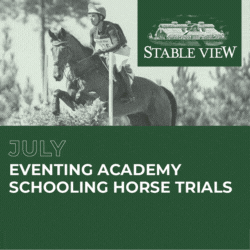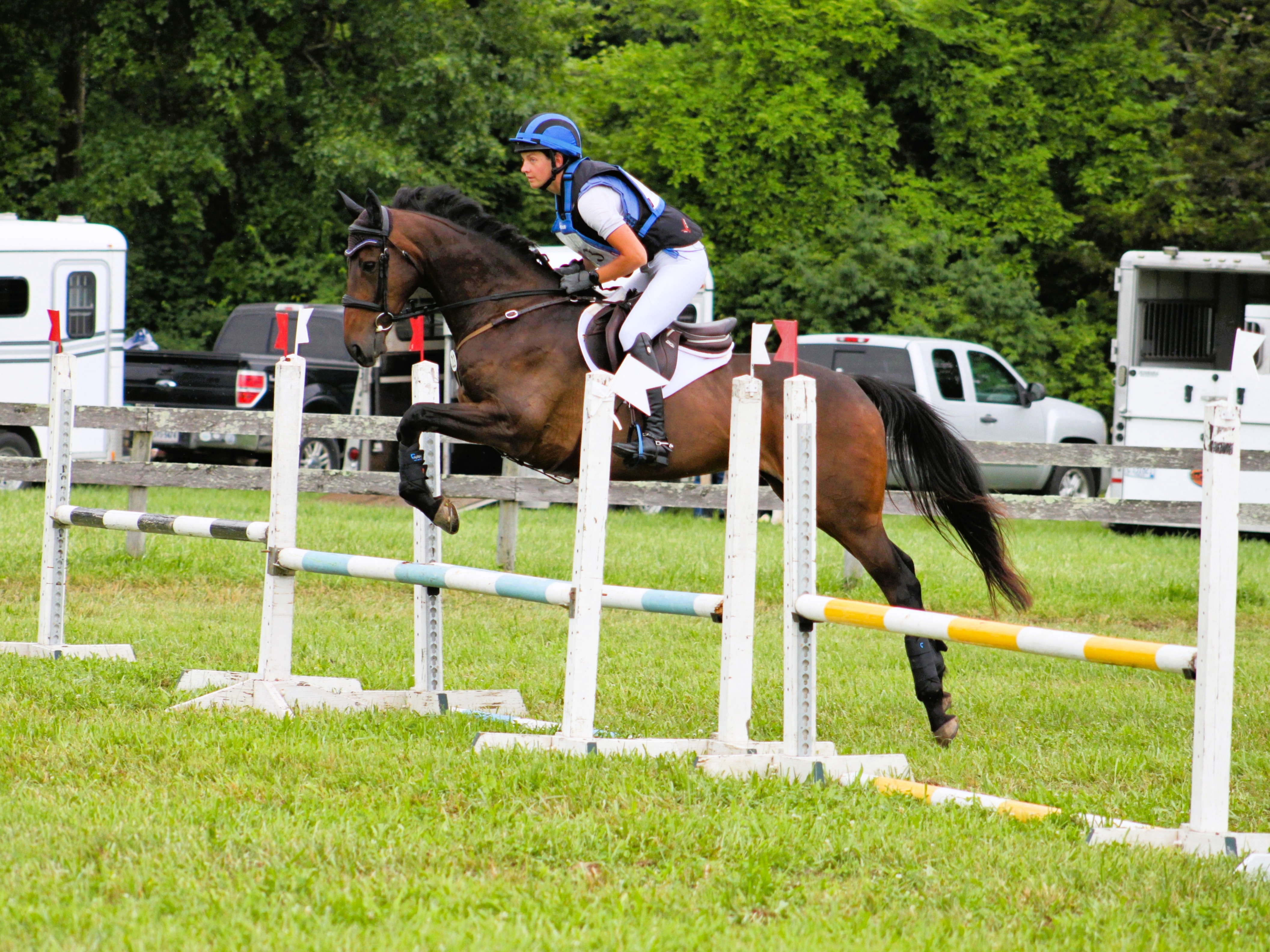We recently polled our readers to find out their burning questions about dressage, and now we’ve enlisted Amelia Newcomb‘s help to answer them! Do you have a question for Amelia? Email us at [email protected] and you could see your question addressed right here on EN!

Photo courtesy of Amelia Newcomb Dressage.
Q: What is a good exercise to get my horse supple and bending to the right in the canter?
Great question! If I have a student who is having trouble getting their horse to bend in the canter, I usually recommend going back to the trot and reconfirming your bending aids at the lower gait. Doing this is super helpful, because often much easier to fix the bend at a slower gait.
Some great exercises to work on the bend at the trot are serpentines, spiral circles, and figures eights. Start with wider turns, then go tighter as your horse gets more supple. You want to be feeling that you can bend to a higher degree in the trot than you need in the canter (ie 12-15m circle bending in trot for a 20m circle in canter). Once you feel like your horse is soft and bending evenly left and right, then you can go back up to the canter.
Remember the bending aids are:
- Inside leg on pushing your horse into the outside aids
- Outside leg supporting behind the girth
- Outside rein steady, catching your horse
- Inside rein suppling to keep your horse soft
It’s the inside leg that is your primary bending aid.
Once you’ve done some bending exercises in the trot, you can bring in your canter work. Here are two great exercises:
Leg-yield to canter:
This is a great exercise to help you set up your horse to bend around your inside leg and puts your horse in a better position to pick up the correct lead.
For this exercise, turn up the quarterline, and once you have your horse straight, leg-yield them over to the rail. Make sure your leg yield isn’t too steep that you loose the shoulder. Right as you reach the rail, sit the trot, ask your horse for the canter, and immediately turn on a circle. The transition for the canter should happen at the point when you’ve just as you’ve reached the wall, the stride before you turn on your circle.
Repeat this exercise a few times in both directions, and I know you will see a difference in your canter!
Snowman:
Another great exercise to help you work on bend in your canter is the Snowman.
For this exercise, you will first ride a 10m circle at the trot at X, then when you reach the centerline again, change direction and bend to ride a 20m circle, and ask for canter. Then, when you get back to the centerline, transition to trot, change direction and bend, and trot your 10m circle again. The change in directions and bend in varied circle sizes in this pattern really help you get your horse supple.
When you ride frequent changes of direction like this, it really helps to work both sides evenly and helps your horse develop the balance and coordination without just drilling it. Eventually the easy side will transfer make it easier for you to get the bend on the harder side.
About Amelia Newcomb:
Amelia Newcomb is a USDF Gold medalist and recipient of the Carol Lavell Prize from the Dressage Foundation. Based in Somis, California, she incorporates complete dressage training from starting the young horse through the FEI levels. Amelia works to develop a trusting and confident relationship between horse and rider. Her approach incorporates all aspects of horsemanship from basic groundwork to advanced dressage movements. The emphasis is always on the foundation with the basic trust, understanding, and relaxation for both horse and rider to create a harmonious partnership. Amelia’s mantra has always been “Dressage for All,” which is evident in both her in person and online coaching. With a successful YouTube video library of hundreds of free educational videos, over 290,000 subscribers (and counting!), and thousands of students enrolled in her online USDF-accredited courses, it is clear that Amelia has a passion for teaching and dressage! “I have been blessed with many great teachers in my career and I hope to help each and every one of my students develop a connection and solid relationship with their horses.” Learn more about Amelia on her website (www.amelianewcombdressage.com) or discover her free educational videos on her YouTube channel “Amelia Newcomb Dressage.”




















